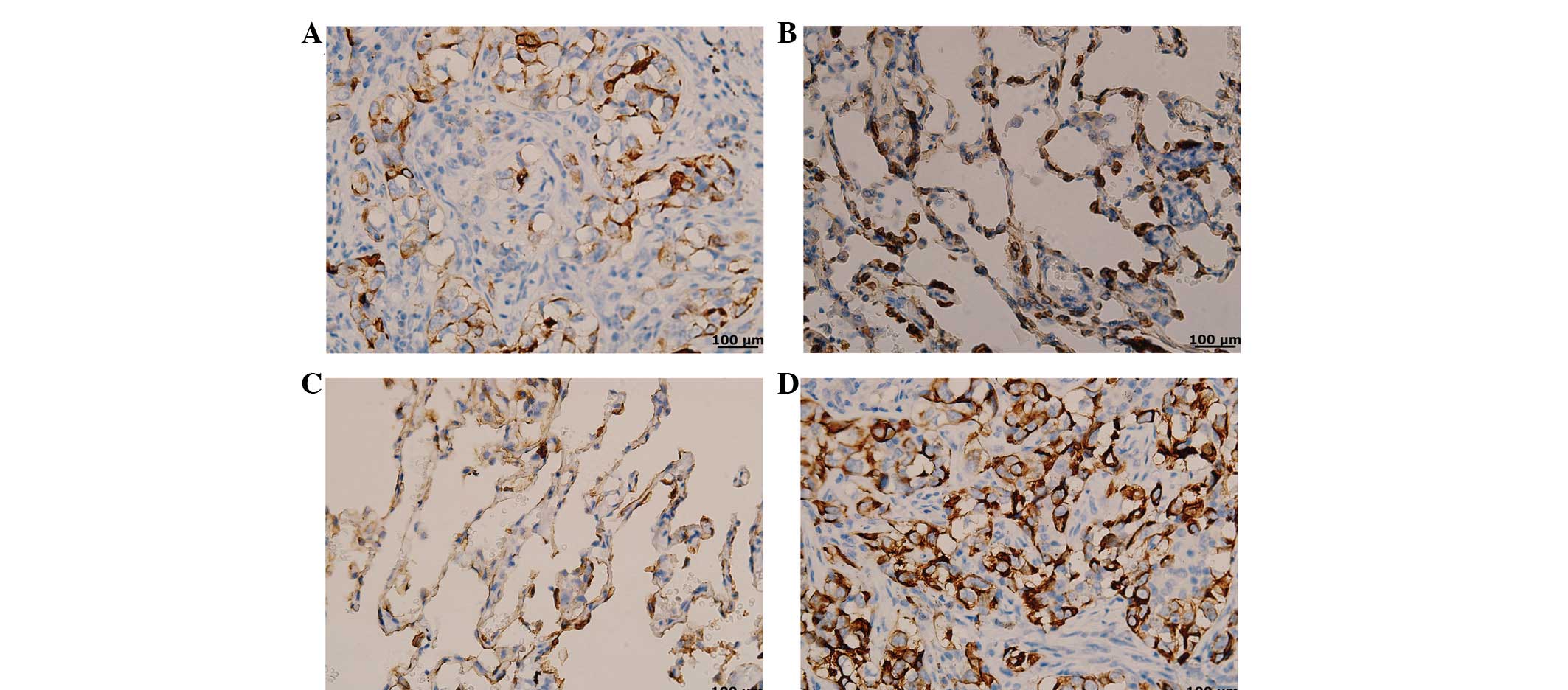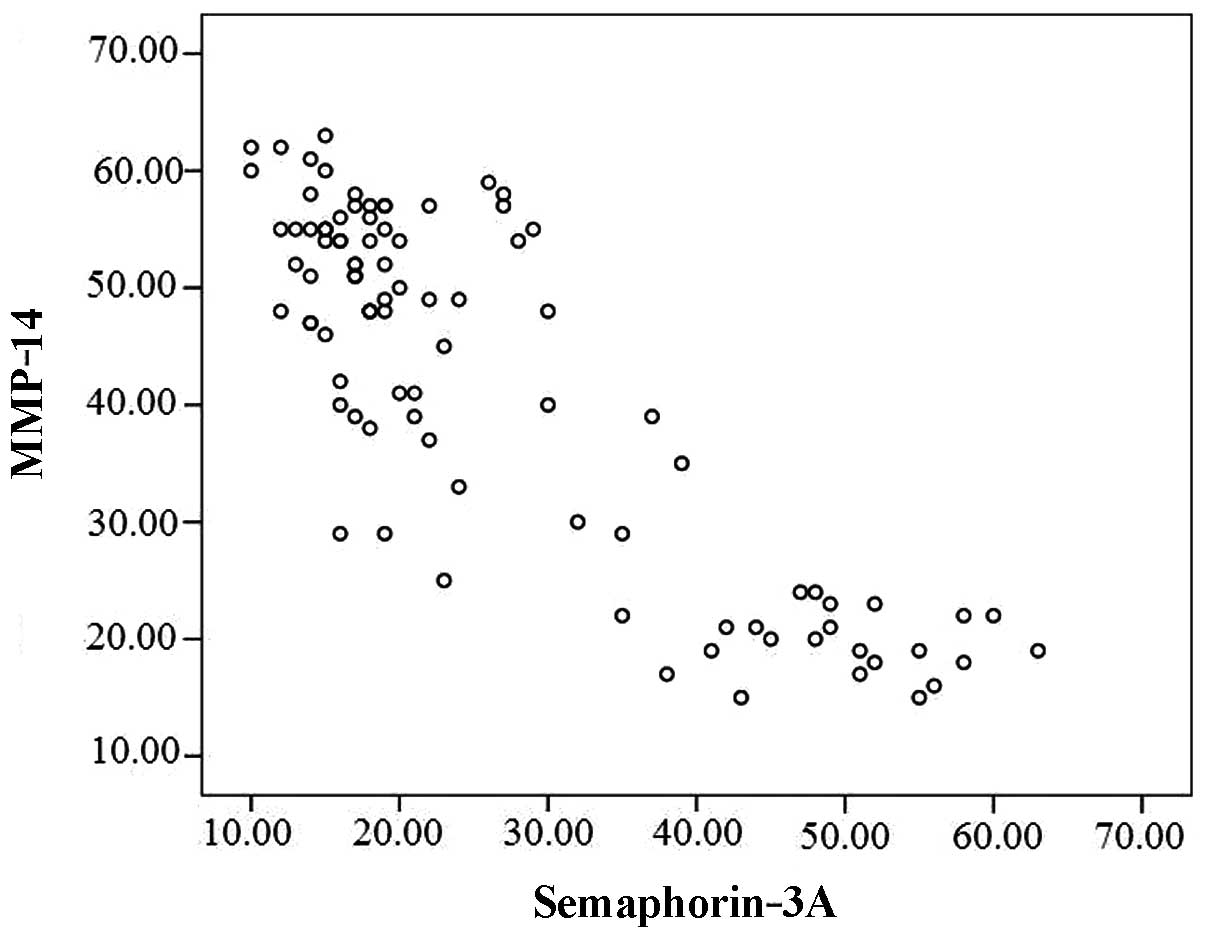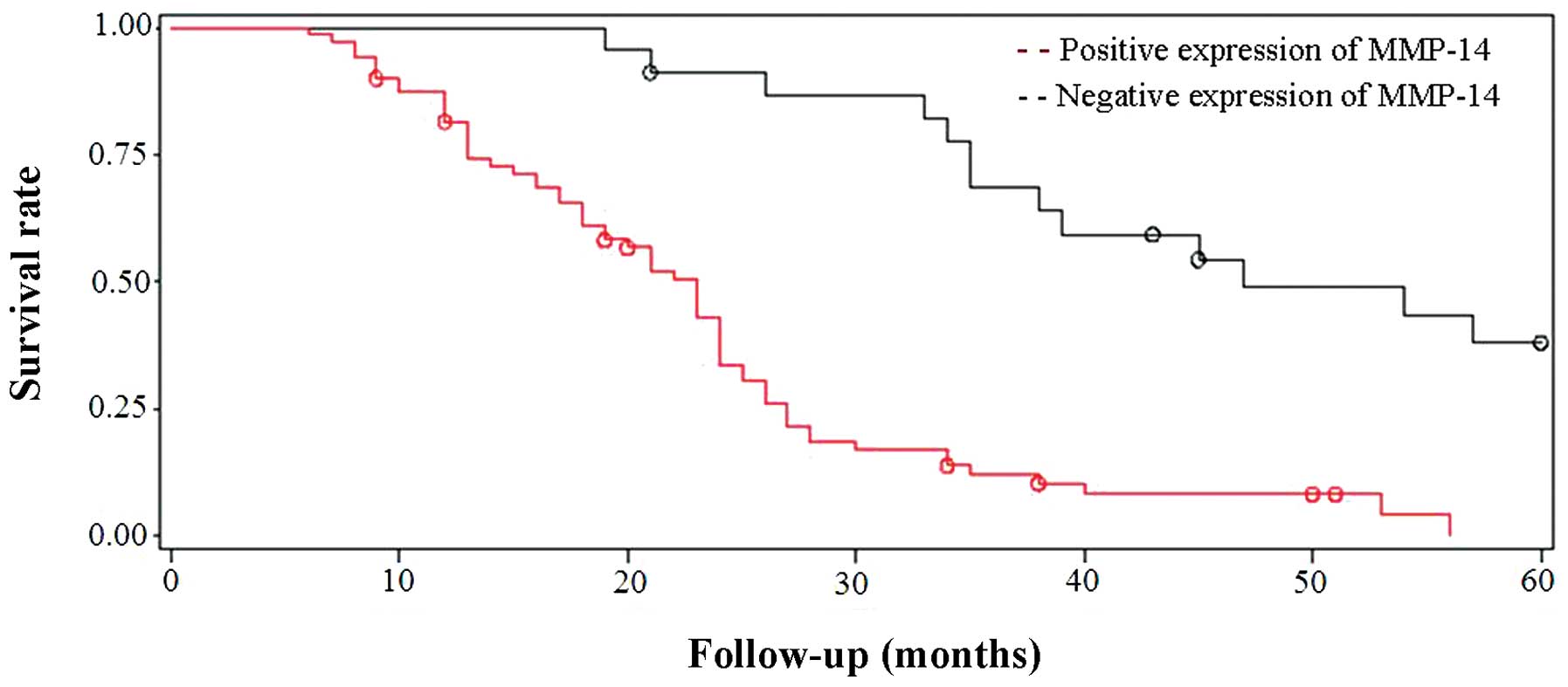|
1
|
Jemal A, Bray F, Center MM, Ferlay J, Ward
E and Forman D: Global cancer statistics. CA Cancer J Clin.
61:69–90. 2011. View Article : Google Scholar
|
|
2
|
Molina JR, Yang P, Cassivi SD, Schild SE
and Adjei AA: Non-small cell lung cancer: epidemiology, risk
factors, treatment, and survivorship. Mayo Clin Proc. 83:584–594.
2008. View Article : Google Scholar
|
|
3
|
Lee PC, Korst RJ, Port JL, Kerem Y,
Kansler AL and Altorki NK: Long-term survival and recurrence in
patients with resected non-small cell lung cancer 1 cm or less in
size. J Thorac Cardiovasc Surg. 132:1382–1389. 2006. View Article : Google Scholar
|
|
4
|
Shelly M, Cancedda L, Lim BK, Popescu AT,
Cheng PL, Gao H and Poo MM: Semaphorin3A regulates neuronal
polarization by suppressing axon formation and promoting dendrite
growth. Neuron. 71:433–446. 2011. View Article : Google Scholar : PubMed/NCBI
|
|
5
|
Charoy C and Castellani V: The
neurotrophic factor GDNF, a novel modulator of the semaphorin
signaling pathway during axon guidance. Med Sci (Paris).
29:127–130. 2013.
|
|
6
|
Roney K, Holl E and Ting J: Immune plexins
and semaphorins: old proteins, new immune functions. Protein Cell.
4:17–26. 2013. View Article : Google Scholar : PubMed/NCBI
|
|
7
|
Gu C and Giraudo E: The role of
semaphorins and their receptors in vascular development and cancer.
Exp Cell Res. 319:1306–1316. 2013. View Article : Google Scholar : PubMed/NCBI
|
|
8
|
Tamagnone L: Emerging role of semaphorins
as major regulatory signals and potential therapeutic targets in
cancer. Cancer Cell. 22:145–152. 2012. View Article : Google Scholar : PubMed/NCBI
|
|
9
|
Goshima Y, Sasaki Y, Yamashita N and
Nakamura F: Class 3 semaphorins as a therapeutic target. Expert
Opin Ther Targets. 16:933–944. 2012. View Article : Google Scholar : PubMed/NCBI
|
|
10
|
Bouvrée K, Brunet I, Del Toro R, et al:
Semaphorin3A, Neuropilin-1, and PlexinA1 are required for lymphatic
valve formation. Circ Res. 111:437–445. 2012.PubMed/NCBI
|
|
11
|
Staton CA, Shaw LA, Valluru M, et al:
Expression of class 3 semaphorins and their receptors in human
breast neoplasia. Histopathology. 59:274–282. 2011.PubMed/NCBI
|
|
12
|
Chakraborty G, Kumar S, Mishra R, Patil TV
and Kundu GC: Semaphorin 3A suppresses tumor growth and metastasis
in mice melanoma model. PLoS One. 7:e336332012. View Article : Google Scholar : PubMed/NCBI
|
|
13
|
Roy R, Yang J and Moses MA: Matrix
metalloproteinases as novel biomarkers and potential therapeutic
targets in human cancer. J Clin Oncol. 27:5287–5297. 2009.
View Article : Google Scholar
|
|
14
|
Murphy G and Nagase H: Progress in matrix
metalloproteinase research. Mol Aspects Med. 29:290–308. 2008.
View Article : Google Scholar : PubMed/NCBI
|
|
15
|
Nagase H, Visse R and Murphy G: Structure
and function of matrix metalloproteinases and TIMPs. Cardiovasc
Res. 69:562–573. 2006. View Article : Google Scholar : PubMed/NCBI
|
|
16
|
Cruz-Munoz W and Khokha R: The role of
tissue inhibitors of metalloproteinases in tumorigenesis and
metastasis. Crit Rev Clin Lab Sci. 45:291–338. 2008. View Article : Google Scholar : PubMed/NCBI
|
|
17
|
Dong Q, Yu D, Yang CM, Jiang B and Zhang
H: Expression of the reversion-inducing cysteine-rich protein with
Kazal motifs and matrix metalloproteinase-14 in neuroblastoma and
the role in tumour metastasis. Int J Exp Pathol. 91:368–373. 2010.
View Article : Google Scholar
|
|
18
|
Perentes JY, Kirkpatrick ND, Nagano S, et
al: Cancer cell-associated MT1-MMP promotes blood vessel invasion
and distant metastasis in triple-negative mammary tumors. Cancer
Res. 71:4527–4538. 2011. View Article : Google Scholar : PubMed/NCBI
|
|
19
|
Rizzolio S and Tamagnone L: Multifaceted
role of neuropilins in cancer. Curr Med Chem. 18:3563–3575. 2011.
View Article : Google Scholar : PubMed/NCBI
|
|
20
|
Fullár A, Kovalszky I, Bitsche M, et al:
Tumor cell and carcinoma-associated fibroblast interaction
regulates matrix metalloproteinases and their inhibitors in oral
squamous cell carcinoma. Exp Cell Res. 318:1517–1527. 2012.
|
|
21
|
Zarrabi K, Dufour A, Li J, et al:
Inhibition of matrix metalloproteinase 14 (MMP-14)-mediated cancer
cell migration. J Biol Chem. 286:33167–33177. 2011. View Article : Google Scholar : PubMed/NCBI
|
|
22
|
Parker MW, Guo HF, Li X, Linkugel AD and
Vander Kooi CW: Function of members of the neuropilin family as
essential pleiotropic cell surface receptors. Biochemistry.
51:9437–9446. 2012. View Article : Google Scholar : PubMed/NCBI
|
|
23
|
Deng YP, Li W and Li YL, Xu H, Liang SS,
Zhang LH and Li YL: MT1-MMP up-regulates VEGF expression in human
breast carcinoma MCF-7 cells and induces tumor angiogenesis.
Zhonghua Zhong Liu Za Zhi. 31:727–731. 2009.(In Chinese).
|


















